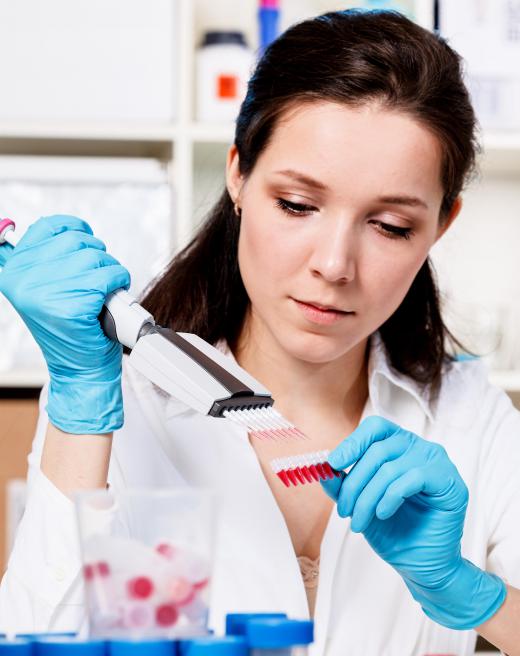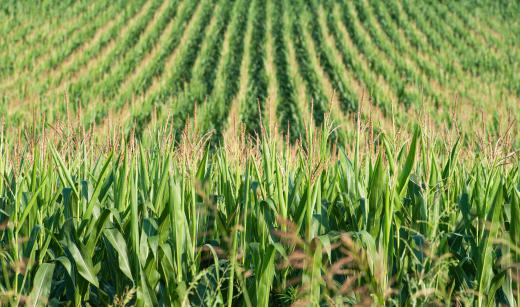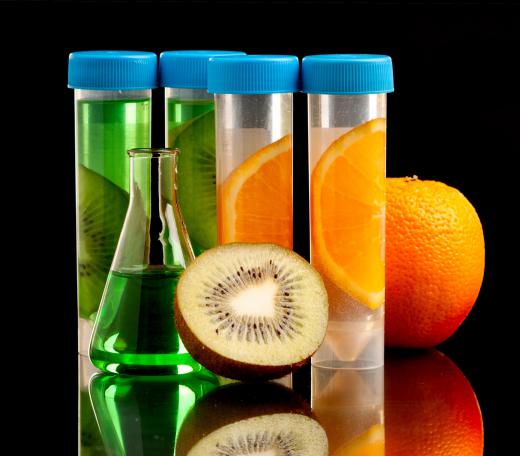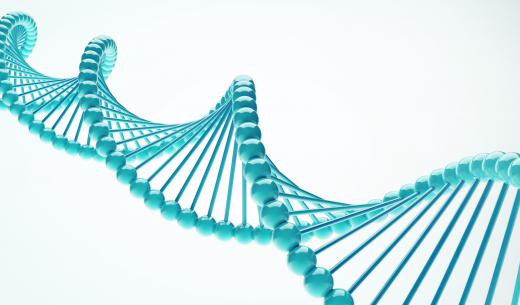What are Transgenic Organisms?
 Mary McMahon
Mary McMahon
A transgenic organism is an organism which has been modified with genetic material from another species. The genetic modification is accomplished by inserting DNA into an embryo with the assistance of a virus, a plasmid, or a gene gun. The embryo is allowed to develop, and the mature organism will express the DNA which has been inserted into its genome. Transgenic organisms can also pass the modification on to future generations by breeding with other members of the same species.
Organisms may be genetically modified for any number of reasons. Genetic modification may be performed to make organisms more vigorous, to add resistance to specific threats, or for the goal of expressing a particular trait. It can be used for everything from adding nutrition to staple crops for the benefit of people in the developing world to making fish glow so that they can be sold as novelty pets.

While species cannot interbreed, as a general rule, DNA from one species can express in another. This is because DNA codes for the same thing no matter where it is, so if a researcher can determine which part of an organism's genome codes for a particular trait and the trait is compatible with the organism being modified, the DNA can be successfully inserted to cause the trait to be expressed in a different species.

One of the most common reasons to develop a transgenic organism is in agriculture, where the development of genetically modified crops has led to a number of advances in the way in which agriculture is practiced. This organism may grow in areas where other members of the species cannot, may be easier to harvest and handle, may be hardier, may contain more nutrition, and so forth. In some cases, the organisms are rendered sterile so they cannot interbreed, for the purpose of protecting patents and to prevent transgenic organisms from cross-breeding with wild relatives.

Another area in which some transgenic organisms are used is in scientific research. Transgenic mice, for example, are used for a variety of studies in which researchers want to be able to study traits from one species in a more convenient setting. Mice can be modified with human DNA for the purpose of testing medical treatments and seeing how they might behave in a human.

There is some controversy over the practice of genetic modification. Some advocates are concerned that interbreeding between transgenic and wild organisms could have unforeseen consequences, and others worry that consuming things like transgenic organisms could be dangerous.
AS FEATURED ON:
AS FEATURED ON:














Discussion Comments
Many of the GMO/transgenic species do not really pose a threat to wild populations, so they say, because many varieties are sterile, which gives rise to the concern over patenting. But the idea that an escaped transgenic fish could escape should be the last of our worries regarding industrial agriculture.
Remember that not all scientists are evil, but when science is funded a certain way, you have to use your product in a certain way. I'm sure the scientist working in the lab wasn't planning some attack on developing nations. That was the doing of the large companies and marketing.
this is all pretty bogus. i just need to know how people use transgenetic organisms in contrast to gene therapy for school.
@ Istria and FrameMaker- you do bring up valid concerns, but I would like to point out that the science behind transgenetics is intended to be beneficial. The pros of genetic engineering have in fact saved lives, and have the potential to alleviate some of the stress that the burgeoning human population is putting on the planet.
I agree that the marketing and money behind transgenics can be unsettling, but we should not abandon such a promising technology. Rather, we should work to improve the way the technology is applied, address the issue of right of ownership of a genetically modified organism, and work to establish bioengineering institutions in developing countries through technology sharing. If the science of genetically modified organisms were shared like the human genome project, then there would be more great minds who could improve transgenic species, and less of a divide between those that have the technology and those who do not.
@ Istria- Another ethical question surrounding agricultural biotechnology involves dependence and equality. Genetically modified plants and animals are beginning to dominate the agricultural landscape and we should all ask ourselves if a few multinational companies that operate purely for profit should dominate global food supplies. What happens when unforeseen consequences arrive from integration of a transgenic species into the wild? If you think that problems from invasive species are bad, imagine what happens when an invasive species that is bioengineered to be unstoppable wreaks havoc on our environment. Even the wealthiest nations and companies will not be able to mitigate such a problem.
As for the question of equality, we must consider the impact of not sharing bioengineering technology between the private and public sector. The way the industry is currently regulated, bioengineered foods will only best serve the industrialized nations. It would be more profitable to bioengineer rice that would fight obesity than it would to bioengineer rice that vaccinates against malaria. People would literally starve and die of malaria in the third world while the industrialized world eats to lose weight.
The concern over transgenic species extends far beyond concerns about interbreeding and the safety of the product. There are great moral and ethical concerns surrounding transgenics and genetic engineering. Many of the multinational bioengineering firms claim that transgenic organisms will help reduce poverty, malnutrition, and undernutrition in developing countries, but this is debatable.
The reality is, in some places like India, the opposite is true. The constant application of hardier transgenic seeds allowed farmers to abandon proper land management practices to the point that the only seeds that will grow are transgenic seeds (which are designed not to bear germinating seeds to protect "patents"). This forces the farmer to buy new seeds every year rather than cultivating part of their crops for seeds. The farmers are now committing suicide across India because they can no longer afford the very products that were "designed" to lift them out of poverty.
Transgenic seeds have turned into nothing more than a way to make developing nations further dependent on multinationals and industrialized nations.
Post your comments